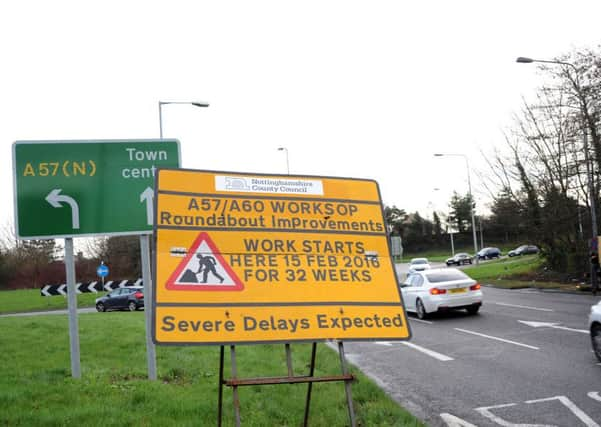READER LETTER: Millhouse - The history of the problem roundabout


The eventual roundabout design owed much more to local politics and local involvement than it did to traffic management and makes quite an interesting story. A bypass for Worksop was first proposed back in 1925, but detailed work on the final scheme doesn’t seem to have been taken in hand until 1974 or early 1975. It certainly didn’t feature in the sales pitch for 176 Newcastle Avenue, which I was looking to buy when I moved to Worksop in the summer of that year, resulting in the following conversational brick being dropped on my foot when I mentioned the location to my boss.
Him: “What about the bypass?” Me: “What bypass?”
However, a quick visit to the council was reassuring, because only a small roundabout was proposed at that time, so I went ahead with the purchase.
Advertisement
Hide AdAdvertisement
Hide AdIt was the Labour council’s proposal for a vast council estate at the back of Mansfield Road that upset things.
All political parties go in for this sort of gerrymandering when they think they can get away with it and the Conservative councillor for the area, Bernard Simcox, was justifiably and volubly upset.
However, the council changed hands before this development could take effect and the new administration gave Geoff Beard, who farmed the land at the back of Mansfield Road, planning permission for private development with the results we see today.
Somewhere in the process the fire department got involved and pointed out the existing access to the rear of Mansfield Road was wholly inadequate for this sort of development and there should also be access onto the roundabout.
Advertisement
Hide AdAdvertisement
Hide AdThis meant the original small roundabout would be greatly expanded. As well as farming, the Beards had also owned land on Newcastle Avenue, as well as the mill and millhouse. Mr Beard had used some of the land to open a caravan site, which had to get retrospective planning approval. The original design for the roundabout hadn’t really affected the site. However, the new one certainly did, slicing off about a third of it. Geoff’s solution was to relocate the site to land around the back of the almshouses, overlooking them and 176/8 Newcastle Avenue, with access through the allotments. I think I met more of my neighbours that week than in the previous couple of years. We all objected to this and the council planners came up with a solution that kept everyone happy, which is why the alignment of Newcastle Avenue is diverted slightly so that access to the caravan site is off the remnants of the old road, which also serves the Mill House, now a pub. That sorted the roundabout problems out for us, but not the traffic problems, unfortunately, because while the heavyweight traffic uses the bypass, some genius diverted all the lighter traffic onto Newcastle Avenue, which is the first place where Worksop is actually signposted. So the easiest and cheapest way of alleviating the traffic at the roundabout would be to signpost Worksop, or at least Worksop North at the top of the bypass, which might encourage traffic from Sheffield to head into town along Gateford Road, as it used to.
Andrew Airey
Newcastle Avenue,
Worksop